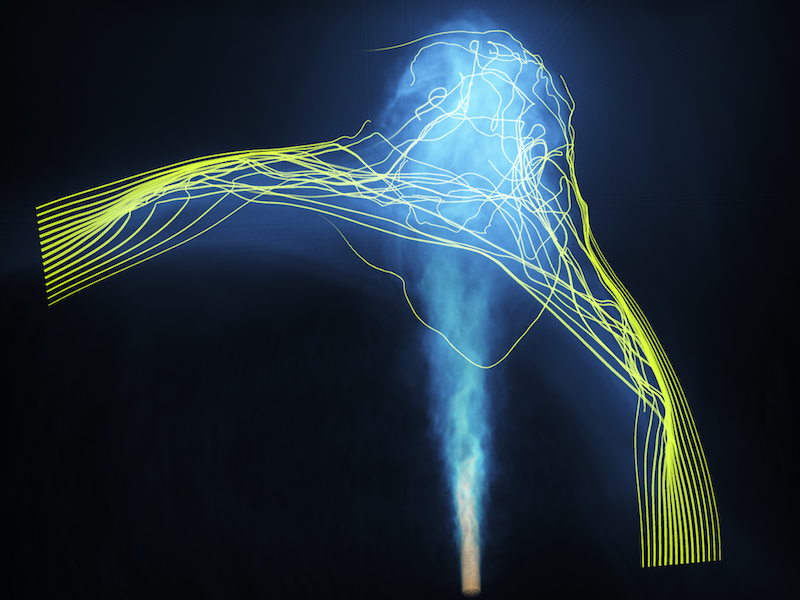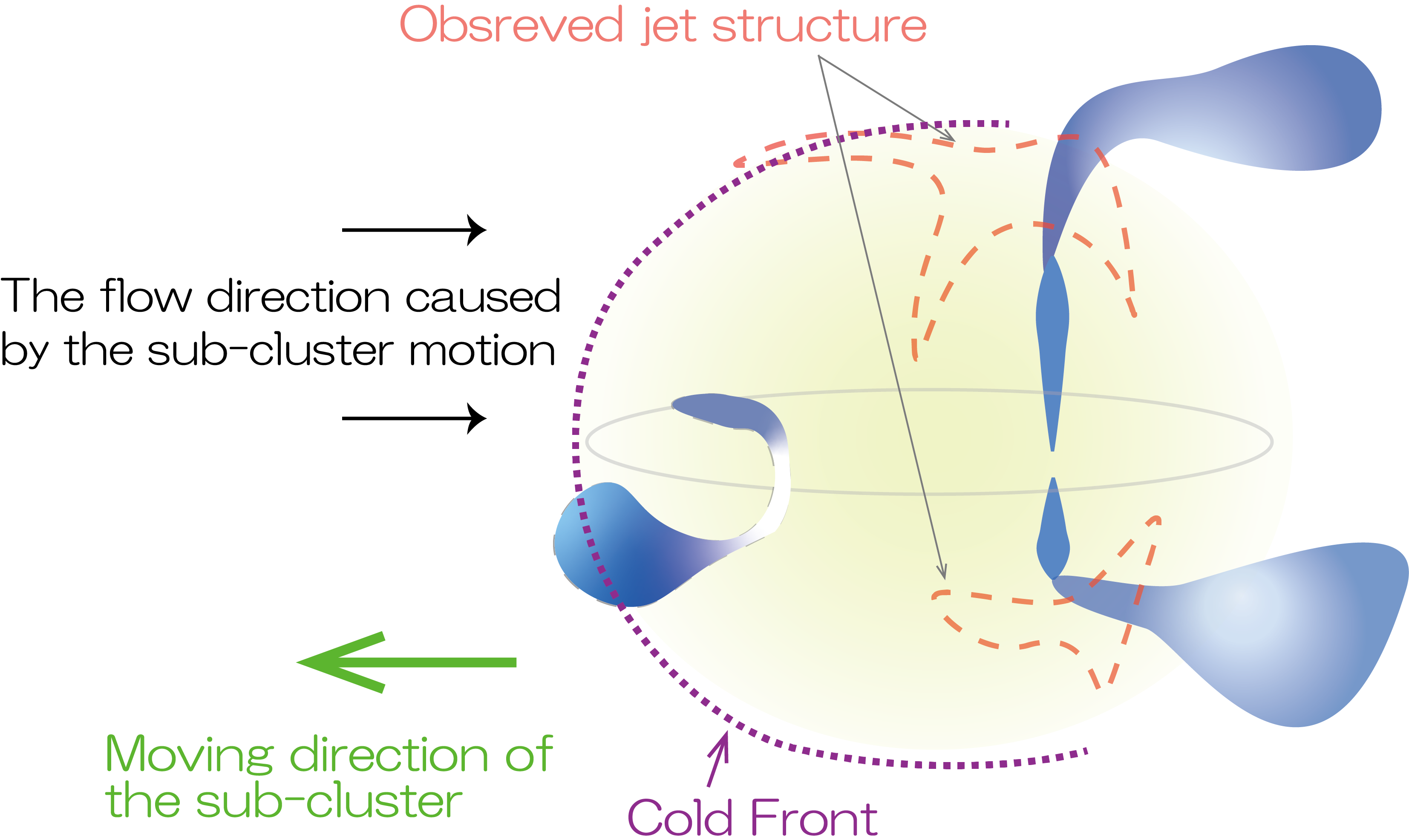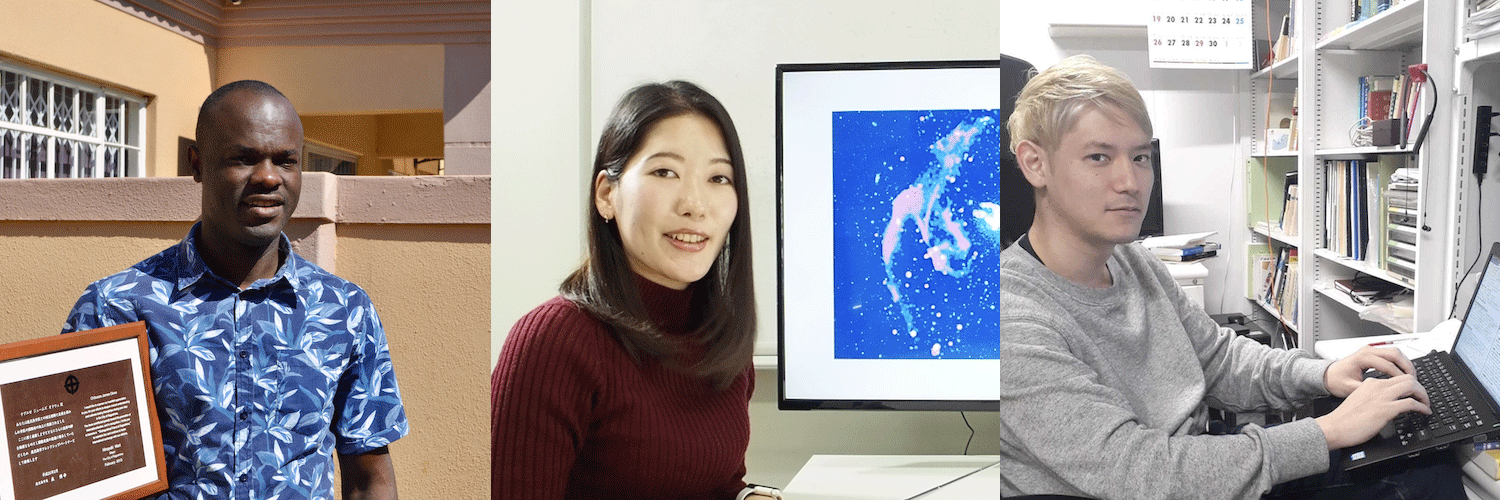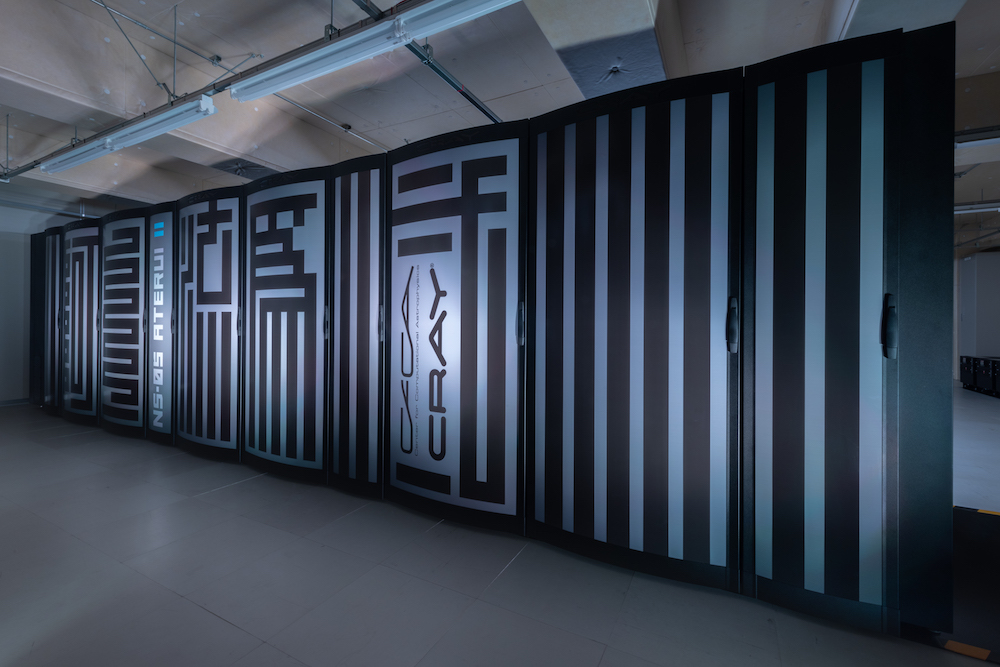Summary
An international team including astronomers at the National Astronomical Observatory of Japan (NAOJ) discovered an interaction between astrophysical jets and intracluster magnetic fields. This result provides a new window to explore the hidden side of the magnetized Universe.
Astronomers used MeerKAT telescope, the state-of-the-art radio interferometer located in South Africa, to unveil the origin of unusual jets in the merging galaxy cluster Abell 3376.
Abell 3376 consists of violently colliding two galaxy sub-clusters. A galaxy at the center of the cluster erupts two powerful jets. The unprecedentedly high-quality radio image of MeerKAT revealed for the first time that the jets bent with almost 90 degree, and wisp along the boundary between two clusters.
To elucidate the origin of this unusual morphology of the jets, a numerical simulation was performed with NAOJ’s ATERUI II, the most powerful supercomputer in the world dedicated to astronomical simulations. The simulations revealed that the jets bent due to an interaction with intracluster magnetic fields.
New observations and simulations show that jets of high-speed particles emitted by the central massive black hole in a powerful radio galaxy in clusters can be used to map the structure of invisible intracluster magnetic fields. This opens a new window for investigating previously unexplored aspects of clusters of galaxies.
These results appeared as Chibueze, Sakemi, Ohmura et. al. “Jets from MRC 0600-399 bent by magnetic fields in the cluster Abell 3376” in Nature on May 6, 2021.

Motivation
Clusters of galaxies are the most massive and largest astronomical objects in the Universe. A cluster evolves through collision and accretion with surrounding material. Such violent phenomena generate a shock and wake (called the “cold front”) in the highly ionized plasma, the intracluster medium: ICM. These structures can heat up the ICM, induce a motion in plasma, and amplify the magnetic field by compressing and draping the intracluster magnetic fields. Such energy conversion from the gravitational energy to thermal and non-thermal energy is of fundamental importance to understand the evolution of galaxy clusters. In particular, the nature of the intracluster magnetic fields is poorly understood because of the lack of observational evidence. A new approach to map and characterize magnetic layers has been highly desired.
Approach, Target and Results
An international team of astronomers including researchers in NAOJ used the MeerKAT radio telescope to observe a bright galaxy in the merging galaxy cluster Abell 3376 known as MRC 0600-399. The MeerKAT is the state-of-art radio interferometer located in the Northern Karoo desert of South Africa. Located more than 600 million light-years away in the direction of the constellation Columba, MRC 0600-399 is known to have unusual jet structures bent to 90-degree angles. Previous X-ray observations revealed that MRC 0600-399 is the core of a subcluster penetrating the main cluster of galaxies and a cold front is formed at the tip of the subcluster. Presence of strong magnetic layers at the cold front is then naturally expected from the observations. In this sense, MRC 0600-399 is an ideal laboratory to investigate interactions between jets and magnetic fields in galaxy clusters.
“The original motivation of the MeerKAT observations was to investigate the large-scale magnetic field structures in Abell3376.” one of the leading authors Associate Professor James O. Chibueze at North-West University said, “The image obtained by MeerKAT, however, reveled unexpected features of MRC 0600-399. Then, we focused on the MRC 0600-399.”
The most striking feature revealed by MeerKAT was the faint “double-scythe” structures extending in the opposite direction from the bend points and creating a “T” shape. Unlike previously known systems, the bent jets flow towards the direction of subcluster motion. Combining XMM-Newton (X-ray) with MeerKAT data, the team found that the bend occurs at the boundary of the subcluster (at the cold front). This indicates that some interactions with the jets and something in the ICM. Dedicated simulations are required to figure out the observed jet morphology and magnetic field configurations.
“Typical jets follow the gas flow in the counter direction of the subcluster motion. Further, in general, the jets tend to become wider due to the mixing with the ICM. I was strongly impressed by the MeerKAT image, which is completely different from known typical jets.” Haruka Sakemi, a graduate student at Kyushu University (now a research fellow at NAOJ), one of the leading authors who analyzed the radio data, stated.
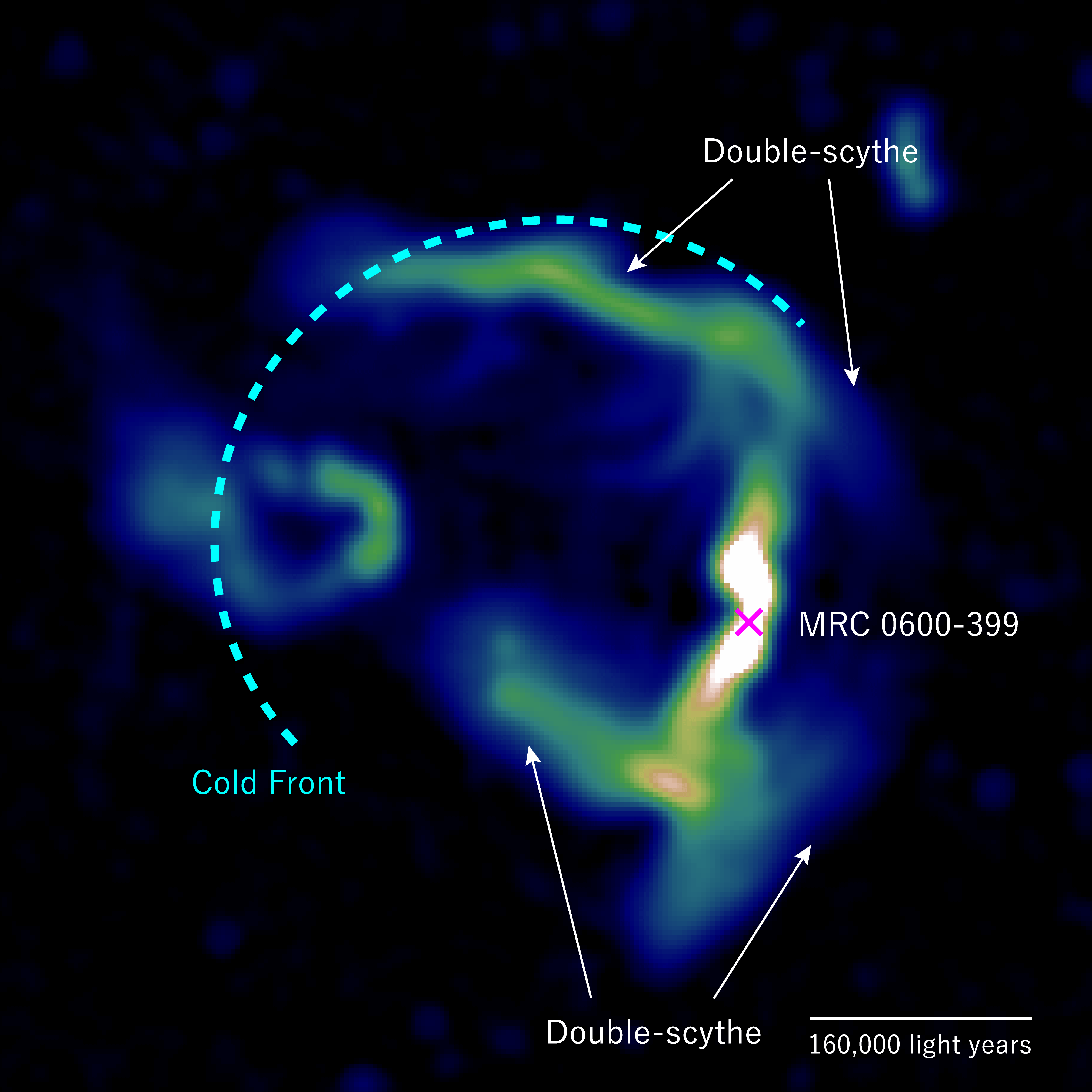
The team assumed that compressed magnetic fields around the cold front prevent the jet propagation and formed the observed morphology. In order to examine this hypothesis, the team performed 3D magnetohydrodynamic simulations on the supercomputer ATERUI II operated at the NAOJ, the most powerful computer in the world among those dedicated to astronomical calculations. This simulation well reproduced the observations, indicating that the interaction between the jets and intracluster magnetic layers is the mechanism of the unusual morphology.
Takumi Ohmura, a graduate student at Kyushu University (now a postdoctoral fellow at the University of Tokyo’s Institute for Cosmic-Ray Research -ICRR), another leading author who performed the simulation told: “Our simulations suggest the presence of the magnetic layer at the cold front. The arch-shaped magnetic field lines will behave like an elastic cord. When the jet encounter with the magnetic field lines, the magnetic tension due to the compression bent the jet and the jet flows along with the cold front.”
(Right) A schematic view of the proposed sicario. (Credit: Modified from Chibueze, Sakemi, Ohmura et al. (2021) Nature Fig. 4.)
Based on results from observations and dedicated 3D MHD simulations, the astronomers proposed following scenario (Figure 2, left): The jets bent as a result of the interaction with ordered magnetic layers surrounding the cold front. When the jets encounter the magnetic layers, the jets compress the magnetic layers. And compressed magnetic layers generate the magnetic tension which deaccelerate and change the direction of the jet. After the interaction point, the jet flows along with the magnetic layers which is the cause of the unusual morphology of MCR 0600-399.
Most importantly, the simulations could reproduce the observed morphology well, meaning it can be used to characterize the property of the intra-cluster magnetic field,
These results open a new window for astronomers to understand the magnetized Universe and provides a novel tool to analyze ultra-high-quality data from future radio observatories like the Square Kilometre Array (SKA).
Future prospect
This is the first discovery of the interaction between the jets from galaxy and intracluster magnetic field. Associate Prof. Mami Machida at NAOJ explains: “The nature of the intracluster magnetic field has been difficult to explore directly. We have demonstrated that it can be characterized by investigating the jet propagation in detail. This will be a promising approach for forthcoming surveys including SKA.”
These results appeared as Chibueze, Sakemi, Ohmura et. al. “Jets from MRC 0600-399 bent by magnetic fields in the cluster Abell 3376 ” in Nature on May 6, 2021.
Explanation Video
(Left) James Chibueze: Associate Professor at the North-West University, South Africa. He received his Ph.D. from the Kagoshima University, Japan.
(Center) Haruka Sakemi: Research fellow at NAOJ. At the time of acceptance of this research paper, she was a Ph.D. student at the Kyushu University.
(Right) Takumi Ohmura: Postdoctoral fellow at ICRR, the University of Tokyo. He was also a Ph.D. student at the Kyushu University at the time of acceptance of the paper.
Research Paper
Title: “Jets from MRC0600-399 bent by magnetic fields in the cluster Abell 3376”
Authors: Chibueze, Sakemi, Ohmura et al.
Journal: Nature
DOI: 10.1038/s41586-021-03434-1
Supercomputer used in this research
[For the Use of Contents in This Website]
- Contents are to be used with a clear indication of its copyright (e.g. (c) NAOJ.)
- If you would like to use the contents found in this web site, please follow Terms of Use of the Website of NAOJ.
Related Links
- NAOJ Press Release "A New Window to See Hidden Side of the Magnetized Universe"
- NAOJ VERA Project Press Release "A New Window to See Hidden Side of the Magnetized Universe"
- The University of Tokyo, ICRR Press Release "A New Window to See Hidden Side of the Magnetized Universe"
- Netherlands Institute for Space Research (SRON) Press Release "A New Window to See Hidden Side of the Magnetized Universe"

